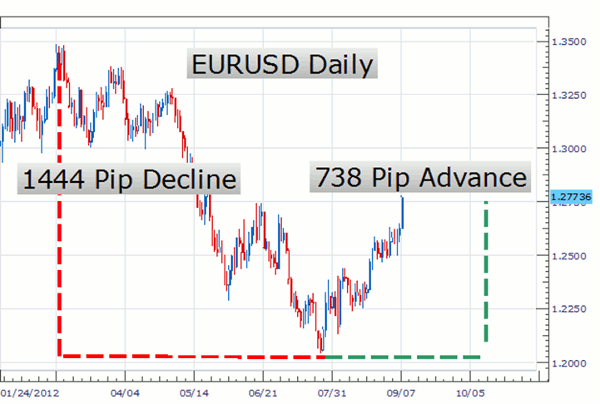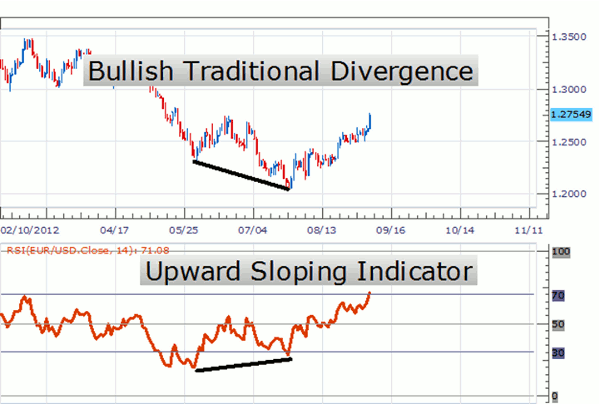Walker England of DailyFX.com explains how to find good trading opportunities using RSI divergences.
As I wrote previously on MoneyShow.com, many traders look to the RSI traditionally for its overbought and oversold levels. While using these levels can be helpful to traders, they often overlook points of divergence that are also imbedded in RSI. Divergence is a potent tool that can spot potential market reversals by comparing indicator and market direction.
Below we have an example of the EUR/USD turning 738 pips after concluding a 1,444-pip decline on a daily chart. Could RSI help us spot the turn? To find out, let’s learn more about traditional divergence.
The word divergence itself means to separate, and that is exactly what we are looking for today. Typically, RSI will follow price—as the EUR/USD declines so will the indicator. Divergence occurs when price splits from the indicator and they begin heading in two different directions. In the example below, we can again see our daily EUR/USD chart with RSI doing just that.
To begin our analysis in a downtrend, we need to compare the standing lows on the graph. In a downtrend, prices should be making lower lows and that is what the EUR/USD does between the June 1 and July 24 lows. It is important to note the dates of these lows, as we need to compare the RSI indicator at the same points.
Marked on the chart below, we can see RSI making a series of higher lows. This is the divergence we are looking for! Once spotted, traders can then employ the strategy of their choosing while looking for price to swing against the previous trend and break to higher highs.
It is important to note that indicators can stay overbought and oversold for long periods of time. As with any strategy, traders should be looking to employ a stop-loss to contain their risk. One method to consider in a downtrend is to employ a stop underneath the current swing low in price.
Walker England can be found at DailyFX.com.












